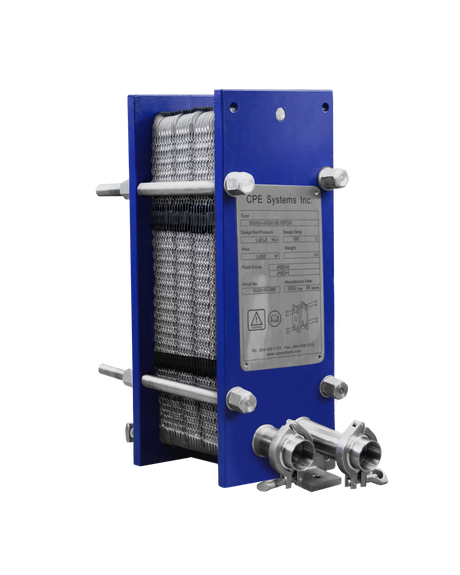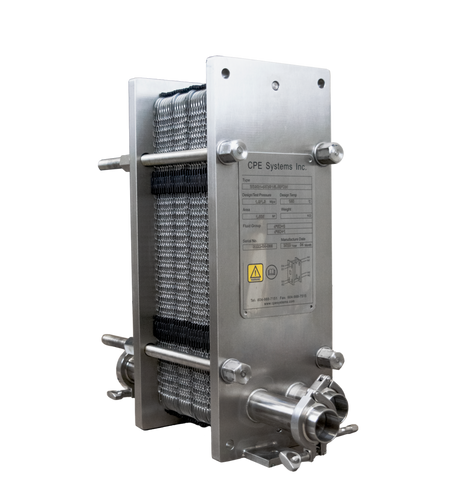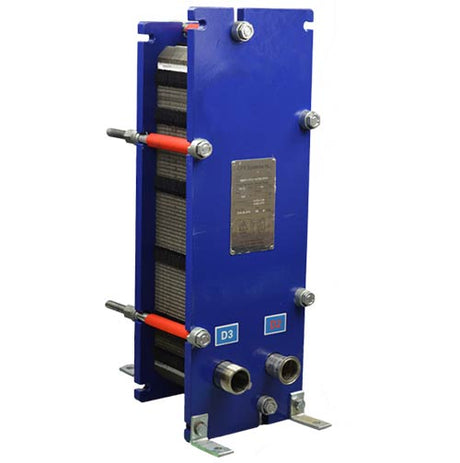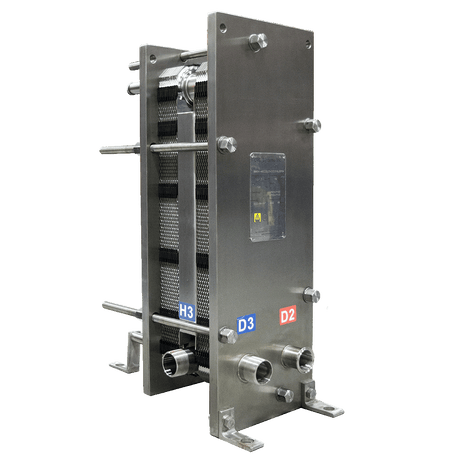You don't have to be an experienced mechanic to troubleshoot your plate heat exchanger (PHE). PHE’s are quite durable, however, they can face performance issues on occasion. The three main issues that occur with PHEs are: leaking outside the unit, leaking within the unit, and pressure drop. These issues are usually easy to diagnose and fix.
Leaking outside of the unit
Liquid leaking out of the unit is usually either a result of damage to the gaskets or a result of an error in the assembly of the unit. Start by checking if the distance between the front plate and the pressure plate has changed (commonly known as “Measure A”). You should have been given this measurement in the unit's manual. If this measure is larger than normal, the unit needs to be tightened, make sure to tighten all of the bolts equally. If this measure is correct, or the unit keeps leaking after it is tightened, mark which plates are leaking. Disassemble the heat exchanger and inspect the plates. Replace the gaskets on the marked plates. Instructions on how to replace gaskets can be found in our Heat Exchanger Manual (located on the manuals page on our website).
Leaking within the unit (liquids mixing)
If the liquids inside the unit begin to mix, it is because the plates are leaking within the unit. This is most likely a result of a perforated plate. To confirm this you can perform a pressure test. The general idea is to fill the unit with water, but only pressurize one side. If there is a perforated plate the unpressurized side will overflow. To begin, apply constant water pressure (NEVER use compressed air with your PHE) to one side of the unit. Fill the other side of the unit with water, but do not continue pressure on this side. Open the connections on the unpressurized side, if a plate is perforated the pressurized side will leak into the unpressurized side causing it to overflow. If it’s a two-section heat exchanger each section must be tested separately. If a plate is perforated, disassemble the unit and inspect the plates with a crevice detection liquid. Our Heat Exchanger Manual includes information on how to disassemble your heat exchanger.
Performance of the PHE with regard to heat transfer and/or pressure drop is abnormal
If your heat exchanger is experiencing a drop in performance, there are several tests you can run to determine the cause. Poor performance is the most common issue with heat exchangers; there are several main causes: an error in the platage, an accumulation of debris within the unit, insufficient water flow, or a faulty hookup.
Platage error: If the plates are assembled in the wrong fashion, it can create a dead zone, causing the unit to bypass a portion of the plates. Review the plates and ensure they are assembled in a honeycomb pattern (shown below). It can be hard to notice the change in the pattern right away, so look very carefully for any backwards plates. If a plate is out of place, you need to you fix it, to do this you must open the heat exchanger (disassembly and reassembly instructions are in our PHE manual) and flip the plate that is backwards. Once your plates are all realigned, close the unit and test the pressure again.

Debris in the unit: If there is a buildup of debris in the unit, it will negatively affect performance. Run a standard CIP cycle to clear out any excess debris; if the debris does not clear, manual cleaning may be necessary. Manual cleaning is fairly straightforward and detailed instructions are in the Heat Exchanger Manual.
Insufficient water flow: If the water flowing to the unit has insufficient flow, it will cause the heat exchanger to lose productivity. Check the pressure and flow rate of the water and ensure that it meets the designated threshold.
Faulty Hookup: If the setup is wrong, the unit will function at extremely low efficiency. Review the operating and setup instructions to ensure that it is being used correctly. Remember countercurrent flow is required.
A couple things to keep in mind
Plate heat exchangers are notoriously difficult to put together if you do not know the configuration of your plates. Please DO NOT take your plates out without numbering them first.
In conclusion
If after trying all of these tests your PHE is still not working, please give us a call and we will do our very best to get your system back on track! Whatever the cause, we have solutions and are always happy to help.





